#two lost souls ( Vader & Sabe)
Explore tagged Tumblr posts
Text
Someone's watching // Vader & Sabe

Battling Obi-Wan had taken a toll out of him, physically. He had gotten injured. His breathing was going to be an issue, in most atmospheres, and his sight and hearing were great, either.
But, his force sense was extremely strong. He was a powerful Sith now. In many ways, his other senses picked up stronger. But when he was out in public especially, Sidious wanted him to be fully armored, including the mask, so they didn't worry about his breathing. But today, he was rebelling and he had just his rebreather connected to his life support, and was breathing that way, with just his Sith robe over his head.
He could sense he was being followed, and it could be because he wasn't in full armor, or it could be an enemy. If he was lucky, it was a Jedi that he could kill.
But, he was trying to be a bit more levelheaded, sometimes. He was glad he went with his breathing collar, because he was relying on the life support today.
Turning for the third time, he spoke in a deeper voice. "You know, you can't hide forever and I can kill you without ever seeing you. So explain yourself, so I give you the right to be seen before I kill you."
@mayxthexforce

#mayxthexforce#(Sabe)#V: Henceforth you shall be known as Darth Vader (Suitless Vader)#Two lost souls (Sabe & Vader)#(starters)
3 notes
·
View notes
Text
He would have probably died on the floor of the ship, if it wasn't for his son. The boy was stubborn, didn't know how to take no for an answer, and believed the best in him when he didn't. It was positively annoying, but it reminded him, in a way, of himself when he was younger, with a touch of Padme thrown in there. But, he saw a lot of himself in Luke. He was a Skywalker. He was not a Lars.
It took him some time. Four surgeries and a lot of meditating before he could leave the hospital, and now he still had time, before he could leave the house. Did he listen to that? No. He had basically left the house, under the watch of everyone he had been left with, including Chewbacca. Okay, maybe not R2. R2 had guilted him about the last 20 years, and he'd stayed put.
Droids. That droid in particular was sassy.
He had cleaned the entire small dorm sized apartment today, because it felt good to be productive. He'd had to lay down after that, with his rebreather collar, and turn the light off.
The light always burned.
But then, he was awake and bored. He didn't feel like meditating, so he took his two lightsabers out towards a starfighter, ignoring the fact that Han Solo was watching him, but threatened him with carbonite again.
Things were easier for him, when he was fixing things. It was the time of day, where he could work on that, with the lights on. He always had his rebreather collar handy, if he went to pass out. But, he had even more metal in him now, and some of his old skin was coming back. He was even growing some hair.
He froze when he heard her voice, unable to turn. Had she now been a part of his nightmares the way that Padme, Obi-Wan and the younglings were? He regretted losing his temper with her. He knew that feelings were developing on his end and he didn't handle anything well, especially his power being out of control.
But, when he faced her again, she was still there and he swallowed and used the force to take in her presence.
"It's pointless to escape. He'd just find me if I did. He's stubborn, wonder where he got that from." He looked into her eyes. "So, are you a nightmare, a hallucination, or are you actually here?"
One Last Chance || Sabé & Vader
Starter for @corruptedforce
Sabé still couldn't believe she let Skywalker convince her of this.
He might have the eyes and hair his father used to have, decades ago. But Sabé would have testified, without any doubt, that Luke Skywalker had inherited all of his mother's stubbornness when it came to believing that anyone could become a better version of themselves. She hadn't understood that belief when it was Padme's, and she didn't understand it any better now that it was Padme's son's. But as it turned out, "He threw me into the sea and left me to drown." made for a flaky excuse to avoid someone when the person BEGGING her to consider giving Vader– Anakin, a chance, was the very same boy who had lost a hand to the very man he was vouching for. He knew what sort of damage his father could cause and yet, here he was, speaking on his behalf.
She just couldn't say no.
So, she agreed to be flown by Skywalker to where he was keeping his father. Apparently, and despite everything, not as a prisoner. Sabé didn't ask questions, no matter how much what little Luke had told her about the events that led to the rebellion housing the once Commander of the Imperial Army, and right hand of the Emperor, poked at her curiosity. She'd already left it clear that if things didn't go well, she expected a ride back to where Luke found her. That was all the conversation she deemed necessary.
Sabé also insisted to meet him ALONE.
And that's exactly what she did. She followed Luke's instructions. Straight down the hall, follow the signs, can't miss it. And sure enough, there was Vader, working on some starfighter.
"You're not planning to escape, are you?" she spoke up. "Skywalker would be upset."
No 'hello's, no 'how are you?'s. He'd almost drowned her. From what Luke told her, Vader/Anakin had been certain he did drown her. He was lucky she'd even agreed to see him again.
10 notes
·
View notes
Text
The Quest for the Lost Bride: Anidala (and Reylo) as Orpheus and Eurydice
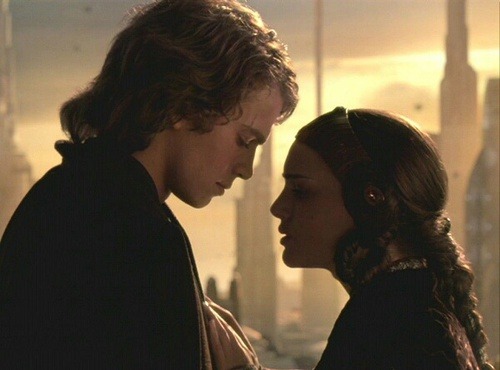
One of the theories I’ve found intriguing since belatedly joining the Reylo fandom has been that of Reverse Anidala, or the idea that the tragedy of Anakin Skywalker and Padme Amidala is being told in reverse, as the joyous romance of Ben Solo and Rey of Jakku. When researching folktale types for my Reylo as Eros and Psyche analysis, I came across the apparent inverse of ATU 425: The Search for the Lost Husband, which is ATU 400: The Quest for the Lost Bride. If Star Wars does indeed draw on mythology from around the world, and the theory of Reverse Anidala is correct, it seems reasonable that Anakin and Padme’s tale would match closely to these Lost Bride tales, the most famous of which is that of Orpheus and Eurydice. On the surface, the mythological motifs in the Prequel Trilogy didn’t seem as distinct as those of the Sequel Trilogy, but a deeper dive demonstrated that George Lucas is, in fact, the inspired genius we all know him to be (awkward dialogue notwithstanding).
Quest for the Lost Bride tales include, just like Search for the Lost Husband stories, variations such as the Animal Bride and Supernatural Bride. There is slightly less standardization in the Bride tales than the Husband ones, even within a single cultural tradition: for instance, some versions of the Orpheus tale end with the eternal separation of the lovers, while others include the eventual happy reunion in the Underworld after Orpheus’ death. However, the most well-known of these stories are tragedies, so I’ll be focusing on those, including both Virgil and Ovid’s versions of Orpheus and Eurydice, several versions of The Swan Maiden, The Crane Wife, the Shinto creation myth of Izanagi and Izanami, and more. As some of these involve faith traditions that are still practiced to this day, I will try to handle them respectfully, but I would appreciate a generous correction if you feel my treatment has been in any way insensitive.
Orpheus was the son of Apollo, the sun god, and Calliope, chief of the muses who presided over epic poetry. He was best known as a uniquely-skilled musician and poet, whose music could charm all living things and even cause rocks and trees to dance. In some versions of the tale, Apollo gives Orpheus a golden lyre and teaches him to play it, and this hero is nearly always associated with magic or witchcraft. While the Greek story presents Orpheus as an artistic soul, both contemporary and later critics scoffed at this as his “unmanliness.” They would often blame the hero’s loss of his wife on the husband’s failures of traditional, aggressive masculinity. Accordingly, later iterations of the Quest for the Lost Bride folktale type have the hero as a warrior, king, or prince.

There’s a lot of Anakin Skywalker here already, both from a canonical perspective and a fandom perspective. The son of an inspiring woman and The Force itself (which is the deity of the Star Wars universe), Anakin is essentially a demigod, and his extraordinary skill with the Force is clearly a gift from that powerful “father.” His power does sometimes take on an artistic, charming character (and as a calligrapher, his grandson has clearly inherited this artistic spirit), as when he floated the pear to Padme, but the Jedi force him to turn his skills to war instead. Anakin is pressed into a violent role at odds with the selfless soul his mother Shmi describes, and even the fans at times seemed dissatisfied with his softer nature. This is part of the reason that the Clone Wars TV show portrayed him as much more traditionally masculine. We recognize both versions of the character as Anakin Skywalker, but they each reflect a particular audience perspective, just as the different mythical Husbands do.
Eurydice, on the other hand, is hardly described at all in the myth. Unusually, there’s not even a mention of her particular beauty. It seems she is just the object of Orpheus love and no more, leading to a great deal of excellent feminist criticism (which we’ll get into later). However, other versions of the Lost Bride give us more detail: most notable is that the heroine is nearly always a fairy or other ethereal creature, who hails from a mystical world apart from the mortal realm. She might be a fairy princess, a selkie, a mermaid, a swan, a crane, or even a goddess. Frequently, she must be enticed or abducted from this other world and her means of returning to it must be destroyed (usually with the typical burning of the animal skin). In some versions of the tale, she even had another husband before the hero captured her. She comes to love her new husband sincerely and live happily with him for a time, but there is always a sense of her being out of place.
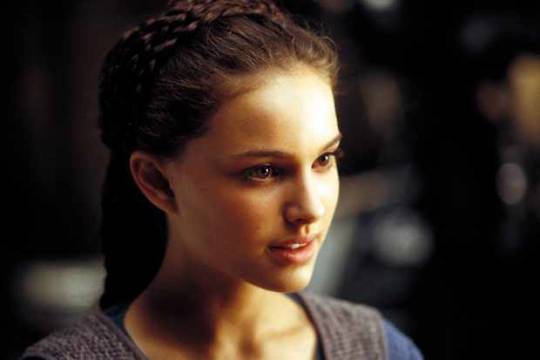
When Anakin meets Padme as a child, his first words to her are “Are you an angel?” This has always struck me as a fascinating artistic choice by George Lucas, a man who so enjoyed worldbuilding that he frankly got a little carried away with it in much of the Prequel Trilogy. He certainly could have chosen a Star Wars-y sounding name for this alien race of ethereal beings from the moons of Iego, but he chose something with a very specific and recognizable meaning: Angel. He knew that this word would immediately communicate what a convoluted explanation of in-world lore (*cough* midichlorians *cough*) would not: an image of purity, kindness, and beauty. Padme is cast as a supernatural image of perfection, and we understand immediately that the lovesick Anakin has placed her on a pedestal, seeing her forever as Angel rather than as Woman. To marry Anakin, Padme must to some extent turn her back on her principles (remember her insistence that she couldn’t “live a lie?”), and is then torn between her loyalty to her husband and to democracy. In a sense, she has been plucked from the fairy world of Naboo and drawn into a marriage that, though filled with genuine love, places her at odds with her true nature.
In Quest for the Lost Bride tales, this duality of the lady is often expressed by the Animal Bride motif, with the heroine taking one form when she is away from her fairy world, and another when she is in her natural home. This might be taken further by having a false bride, a variation best known from the Black Swan of the Swan Lake ballet. In this example, the bride’s false nature is personified as a completely separate woman, while her true self exists in the form that the hero first falls in love with. Interestingly, this appears to be referenced in the costuming of Queen Amidala and her decoy, Sabe: During the invasion of Naboo in The Phantom Menace, Sabe wears a towering robe of black feathers. Later in the finale, Padme wears a similarly-feathered gown of soft white layers.
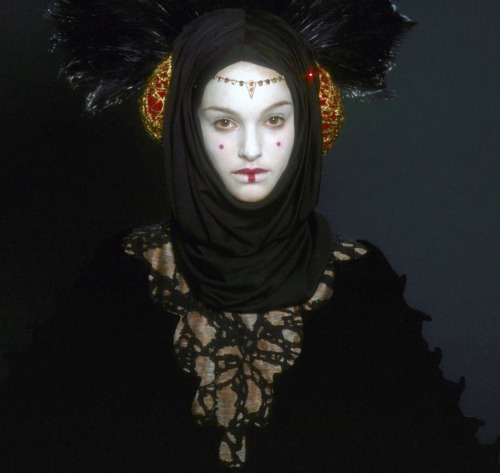
In Attack of the Clones, we see this duality within Padme herself in the two scenes in which she confronts her feelings for Anakin: When she denies her feelings for him and declares that they cannot be together, she wears a jarringly seductive black dress. This is clearly not her true self. Later on Geonosis, when she finally declares her love for him, Padme is clad in pure white. She then wears white again as she binds herself to him in marriage. Still another variant of the two brides theme is the human woman versus the shade (sometimes a rotting corpse), but we’ll get to that later….
Orpheus and Eurydice’s union seems to be doomed from the outset, as Hymen, the Greek god of marriage, fails to bless their marriage. Eurydice is then pursued by an insistent suitor, and in fleeing him, steps on a viper and dies of a poisonous bite to the heel, descending to the Underworld for eternity. In other Lost Bride tales, the enchanted wife returns to the fairy realm or retreats into her animal form, often after a betrayal by her husband. In the Maori tale of Mataora and Niwareka, husband Mataora strikes his spirit wife Niwareka across the face, and she flees back to her homeland because domestic violence is unheard of among her people. And in the Shinto creation myth of Izanagi and Izanami, wife Izanami dies in childbirth, burned to death when giving birth to the fire god Kagutsuchi. In fact, it’s extremely common for the fairy wife to flee or die after giving birth to her husband’s children.
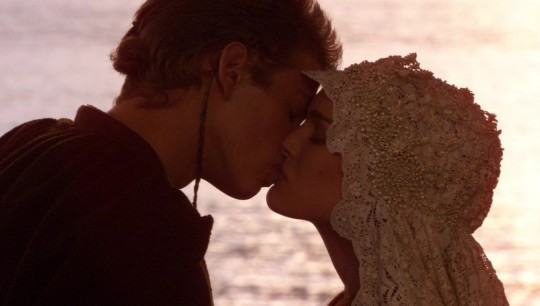
Again, the parallels to Anakin and Padme’s story should be obvious: Since marriage is forbidden by the Jedi Order, the couple’s nuptials must remain a secret, meaning their union is never blessed by the powers of their world. Though Padme has no suitor, we see Anakin in Revenge of the Sith split into two people: the Jedi who loves his wife, and Darth Vader, who bids her join him in his galactic domination. In that sense, Vader is the dark rival for Padme’s affections. Further, he cements the loss of his wife with the ultimate marital betrayal, attempting to strangle her with the Force. And finally, Padme dies after giving birth to the twins, at the same moment that Vader rises from the flames that consumed Anakin Skywalker. The Lost Bride descends to the Underworld, and now begins the husband’s Quest.
One of my favorite sources for this analysis was In Search of the Swan Maiden: A Narrative on Folklore and Gender, by Barbara Fass Leavy. I strongly recommend checking it out, but this is one of her excellent points that caught my eye:
“.... according to the tale type Index, wives search for their lost spouses, whereas husbands who have lost fairy wives embark on quests - a particular irony given that the searching women characteristically win back their spouses and the questing men characteristically do not.”
I find this fascinating as a commentary on the perspective of both the storyteller and the audience in the Prequel Trilogy versus the Sequel Trilogy: the traditional tales seem to assign greater agency to the men, but greater success to the women. This can be seen in the prequels when Padme seems unusually passive and even dies of a “broken heart,” despite having two children to live for, as many have pointed out. Further, the first six films of the Skywalker saga are told from a masculine perspective, so a Quest for the Lost Bride tale seems like a natural fit. In the sequels, however, the perspective has shifted to the feminine, attempting to assign greater agency to the heroine and leading her toward a successful retrieval of the Lost Husband. This is important, because from this point onward in the myth, I’m going to be applying more and more of the story motifs to the Sequel Trilogy, not just the Prequels.
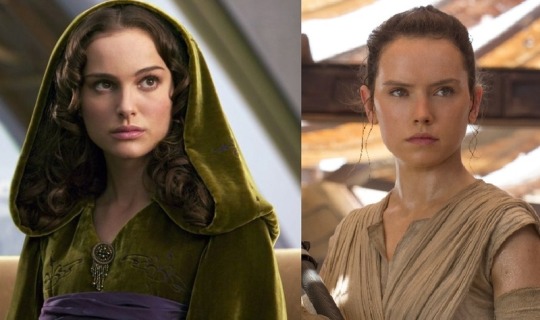
Back to the Quest: Orpheus, devastated by his wife’s death, roams the earth playing mournful tunes on his lyre. Eventually, he decides to descend to the Underworld and plead with Hades and Persephone for his wife, referencing their own love story to appeal to their empathy. Just because it’s gorgeous, here’s part of his song:
“Let me again Eurydice receive,
Let Fate her quick-spun thread of life reweave.
All our possessions are but loans from you,
And soon, or late, you must be paid your due;
Hither we haste to humankind's last seat,
Your endless empire, and our sure retreat.
She too, when ripened years she shall attain,
Must, of avoidless right, be yours again:
I but the transient use of that require,
Which soon, too soon, I must resign entire.
But if the destinies refuse my vow,
And no remission of her doom allow;
Know, I'm determined to return no more;
So both retain, or both to life restore.”
*MELTS* So anyway, his song works and they tell him he can lead Eurydice out of the Underworld, BUT she must walk behind him and he must not look back at her even once, or else she will spend eternity as a shade in Hell. In other tales, the husband might be instructed never to look upon the wife’s animal form (The Crane Wife), or upon her rotting corpse (Izanagi & Izanami), or he may be given another admonishment from his father-in-law as to the acceptable treatment of the daughter. Invariably, the hero swears he will obey, but whether an hour or many years later, he fails. In Orpheus’ case, he is nearly returned to the land of the living when he is unable to resist the temptation to glance back and check that Eurydice has not lost her footing. She vanishes, and Orpheus (described thereafter as having a “frozen breast”) is again wracked by grief, swearing off of [sexual] contact with women and again roaming the world singing songs of sorrow.
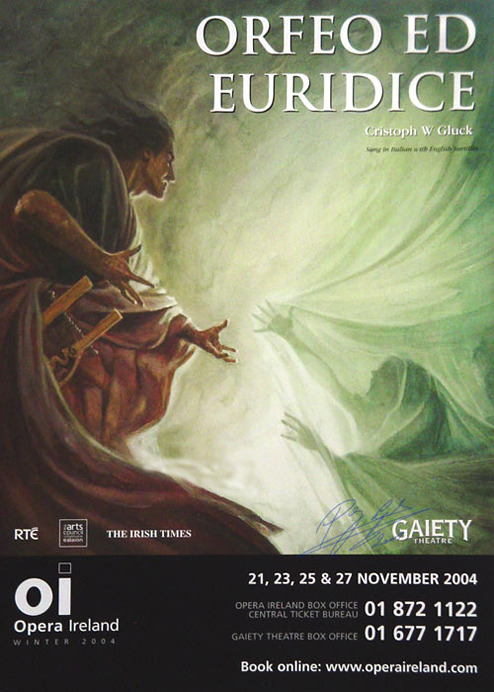
If the “look back” can be seen as a loss of faith, or a fall to the temptation for power, then Anakin certainly demonstrated this in his reach for the power that Sidious offered. Padme begs him to run away with her, to turn back toward the Light, but Anakin “looks back” to the powerful promise of the Dark Side and loses her forever. Similarly, Ben Solo gazes at Rey across the burning throne room, clearly thinking only of being with her…. Until he “looks back” at Snoke’s throne, and is pulled back into the fear and bitterness that have kept him trapped in the dark for so long. Within her own Search for the Lost Husband journey, this is the moment that Rey also sees Ben’s true form, and realizes that she has to leave him. The lovers are separated (for now), until the husband can reject the lure of power and keep faith with his wife.
I’m very much not the expert here (that’s @corseque ), but we know from the Darth Vader comics that he was trying for the rest of his life to bring Padme back from death. We don’t really know how near he was to success, but that story may be relevant to the plot in The Rise of Skywalker. In any case, the myth now starts to get very interesting: Feeling spurned, a group of Maenads (female devotees of Dionysus) attack Orpheus in a forest and literally, gruesomely tear him limb from limb, until the ground is littered with body parts. This is actually a fairly common event in Greek mythology, such that it even has a name: Sparagmos, “to tear apart.” TEAR APART. Anakin, of course, did indeed lose limbs at the time of his “death,” when Obi-Wan cut off his legs and then Sidious raised him as Vader. If Reverse Anidala is true, and Ben Solo begins his story at a moment parallel to when Anakin Skywalker ended his, then of course the son of Leia sobs in the first sequel film: “I am being torn apart.” It’s poetry; it rhymes.

(GIF source: @mamalaz)
After his death, Orpheus’ head floats down a river on his lyre, continuing to sing his mournful songs to all who will hear. It eventually lands on the island of Lesbos, where it prophecies and eventually becomes as famous as the Oracle of Apollo. As I mentioned in my previous post, the iconic helmet of the tragic fallen hero does make an appearance in the ST, and it even seems that Kylo Ren is seeking wisdom from it. Apollo and the Muses finally take pity on poor Orpheus, and they bury his limbs. In some versions, the story ends here with a nightingale taking up the song of the lost lovers, but in others, Orpheus finally descends to the Underworld and is reunited with Eurydice, and they spend eternity together, hand-in-hand. Perhaps this means that Anakin may finally return to Padme and they may be together in the Force.
Among the other stories of the Lost Bride type are details that also align well with the Skywalker Saga: In the Shinto tale mentioned above, Izanagi fails to retrieve his wife but then begets Amaterasu (the sun goddess) and Tsukuyomi (the moon god). Anakin’s children Luke and Leia are visually associated with the sun and moon throughout the films, and similar imagery is used for Ben and Rey (NOT suggesting they’re siblings, people, just descendants of the Skywalker legacy, geez).
Another feature of these tales is the original meeting of the wedded pair: While in Orpheus and Eurydice their initial meeting is unrecorded, most stories actually include the abduction of the bride, either physically or by default because the husband has hidden or burned her animal skin. While this doesn’t really apply to Anidala, it certainly applies to Reylo, as Kylo of course carries Rey off to Starkiller Base. But it applies in another way, as well: In The Last Jedi, Ben breaks down Rey’s lies that she has told herself about her parents, in a sense burning away the protective skin of denial that she has, rendering it impossible for her to return to her childlike state. This is in a way another abduction, as Rey is forcibly pulled from her enchanted form to her true self.

(GIF source: @lyanna-stark)
There is also the common motif of recognition, which appears in the Search for the Lost Husband, as well. Often, when the lovers are separated, the lost spouse forgets the questing spouse and does not recognize them when they come to the rescue. Their memory is usually jogged by the spouse performing a unique task that only they can do, or by returning a gift which was once given before. From The Greenwood Encyclopedia of Folktales and Fairy Tales: “It is interesting to note how these extended narratives tend to duplicate the motifs by repeating them in reverse order - she recovers her suit, and he recovers her; she presents a ring, and he represents it to regain her.”
In Revenge of the Sith, Padme cries to Anakin “I don’t know you any more!” clearly stating that she no longer recognizes her husband. While we have yet to see those characters’ reunion, there is a particular moment of recognition in the ST, related to a powerful object which has been previously offered as a gift: the legacy lightsaber. When Rey calls the saber to her in The Force Awakens, Kylo breathes “It is you” in the novel, clearly recognizing her in some way. There are hints that Rey also recalls him on a subconscious level, though for now we can only speculate how. Still, it’s clear that many more legacy objects are going to appear in TROS, so there will be plenty of opportunity for Rey to get a reminder!
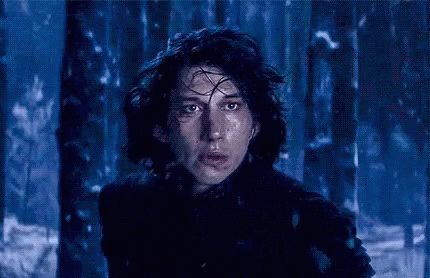
In Barbara Leavy’s book, she mentions that the central thesis of these folktale types seems to be that the relationship between spouses is the basis for peace and stability in the world:
“These examples of emotional failure are significant because they suggest that even were it true that romantic love is an invention of modern Western literature, its elements not to be read into narratives where they do not apply, the importance of emotional bonds in the marital relationship has probably always been recognized. The breakdown in the attachment of husband and wife is a significant feature of some of the world’s most widely-told stories. So long as the family supplies society with a basic structural unit, the affective tensions within the family will be crucial aspects of daily life and the narratives that grow out of it.”
As applied to the Skywalker Saga, I take this to mean that the wars of in “Star Wars” are tied to the breakdown of the marriage of our central characters: Anakin and Padme, and later (to a lesser extent) Han and Leia. It follows then that this central conflict can only be resolved by the healing of the bond between husband and wife. When we say that the Skywalker Saga is the story of generational trauma, this is what we mean, and it is a tragically relatable tale for much of the audience. We see the sorrow of our broken families writ large in a violent conflict across an entire galaxy far, far away, and we yearn for hope and healing.
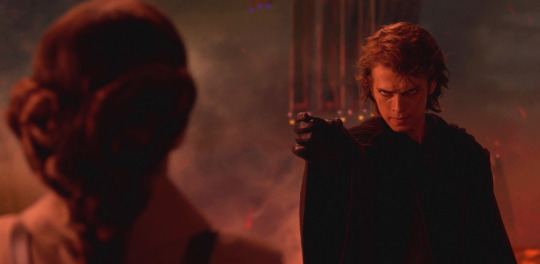
Leavy further illuminates an aspect of these stories - Psyche’s Search and Orpheus’ Quest - that I find particularly fascinating in light of the frequently gendered discourse around Star Wars:
“If it is true that the Orpheus tale is as favored by men as the Cupid and Psyche tale is favored by women, then male storytellers appear to be expressing through these narratives their difficulties in achieving self-definition consistent with stereotypical ideals of manhood. The typical success experienced by Psyche and the equally typical failure encountered by Orpheus can be profitably analyzed in the context of a recent study of the difference between the ways in which men and women respond to their own fantasies:
‘women would see deprivation followed by enhancement, whereas men would see enhancement followed by deprivation.’ In contrast to women, ‘men showed a preference for extreme endings, which revealed itself most clearly in the tendency of men to see any decline or fall as abrupt, total and final. The possibility of a resurgence or second chance, which is implicit in the female pattern, does not seem very real for men. Perhaps an important difference is that the woman is socialized to lose (or give up) control without panic, and that she picks up as a positive concomitant to her submission confidence of recovery in the face of failure or suffering.’”
If I may generalize, the Star Wars fans who seem to want or expect a tragic ending for Ben Solo predominantly identify as men, whereas those who want or expect his redemption and happy ending predominantly identify as women. It seems that the Star Wars fandom does bear out Leavy’s claim that men relate to the tragic Quest for the Lost Bride, which contains harsh punishment for the failures of its hero, while women prefer the Search for the Lost Husband, which rewards its heroine’s persistence with a passionate love. Again, this is a generalization, as obviously individuals of all genders and none can enjoy a wide range of stories.

Many critical analyses of Orpheus and Eurydice point out that there is a distinct power imbalance between the pair, and that therefore a happy ending can only occur if the husband successfully subjugates his wife. Much of the hero’s actions seem to be an attempt to control his wife or control her fate, and this is nearly always characterized as a character flaw on his part. In fact, the descent into the Underworld is sometimes interpreted not as an expression of death-defying love, but of an unwillingness to accept the finality of death, or a failure to accept that the fairy wife has chosen to flee of her own volition. On the rare occasions when the husband successfully retrieves the lost bride from the mystical realm, it is usually not because he approached her with humility and remorse for his lack of faith, but because he vanquished her demon lover. On the other hand, some stories actually switch perspectives from husband to wife after the bride is lost, and the tale suddenly becomes the Search for the Lost Husband, with all its typical features. When the lovers are equals and the wife pursues the husband, then their reunion is successful and lasting. This seems to be happening both on a large scale within the full nine films of the saga, and on a smaller scale within the Sequel Trilogy itself, as Anakin and Ben follow Orpheus’ path while Rey alone follows Psyche’s, which is an excellent sign for Ben’s redemption and happy union with his bride in The Rise of Skywalker.
So there you have it…. Yet another big-ass meta that hopefully demonstrates the genius mythology of the Star Wars saga, and not just the fact that I’ve spent way too much time researching this. Thanks for reading and as always, feedback is welcome!
Previous posts in this series:
The Search for the Lost Husband: Reylo as Eros and Psyche
More Search for the Lost Husband: The Burning of the Beast’s Skin in Star Wars
This post is dedicated to @ahsokaeden65, who gave me a gentle kick in the butt to finish it! <3
#anidala#reverse anidala#anakin x padme#anakin skywalker#darth vader#padme amidala#reylo#reylo meta#star wars meta#star wars analysis#mythology#greek mythology#folklore#atu 425#atu 400#the search for the lost husband#the quest for the lost bride#star wars mythology#monomyth#swan maiden#swan lake#swan princess#animal bride#animal bridegroom#orpheus and eurydice#cupid and psyche#orpheus#eurydice#mythic romance#fairy tales
245 notes
·
View notes
Note
okay well first of all, let it be known that I ship Anakin/Sabe more than any of his other ships because we have developed them so much and they are our babies. I will AU the fuck out of them with you and I don't just AU with anyone.
I'm not a split Anakin and Vader person because as you know, we have Vaderkin ships and Sabe, and those go under Anakin typically.
But, I also ship Vader/Sabe in that exact form. There's a familiarity and a two lost souls in them that I love so damn much, and we need to fix what the comics did to them. Plus, I love what we were talking about with them yesterday about if he survived and how he still gets panic attacks and such.
NOW THAT'S JUST THE GIVEN.
Don't think I have forgotten about Anakin/Merrin and Vader/Merrin. Nothing appeals to either side of him more than the green glowy trick and well, with Vader, the whole desecrating altars.
I also love the idea of Sabe/Obi-Wan. That's just one that we need to get off the ground, same with Anakin/Vader and Trace. I'm sure there are more. You've got 99 characters and I could probably find a character to throw at any of them. Be careful or I'll throw my married at 16, 6'2 NBA player at them.
But no, I ship so much with you. I love writing with you. Also Vader thinks he and Sabe need to punish Fox.
Who do you ship with my muse?
Bonus: Include why you like the ship!
You know how much I love Sabekin. They were the very first ship I roleplayed in this blog. Pioneer ship fr fr, and for the longest time I was only roleplaying regularly with you, so I don't think I'd have stuck around as long as I have if I hadn't brought you down to the dark side with me xD Merrin and Trace also love their disfunctional man, even if they've not been as deeply explored. And Obi-Wan and Sabé are that couple who judges everyone else, I love them! RIP Fox, again
1 note
·
View note
Text
@mayxthexforce
Pretty much how Anakin & Sabe or Vader and Sabe always start.
“i’ll kill you.” are we about to kiss
#(Sabe)#maytheforce#You don't look like her (Anakin & Sabe)#two lost souls ( vader & sabe)#BUT LITERALLY
57K notes
·
View notes